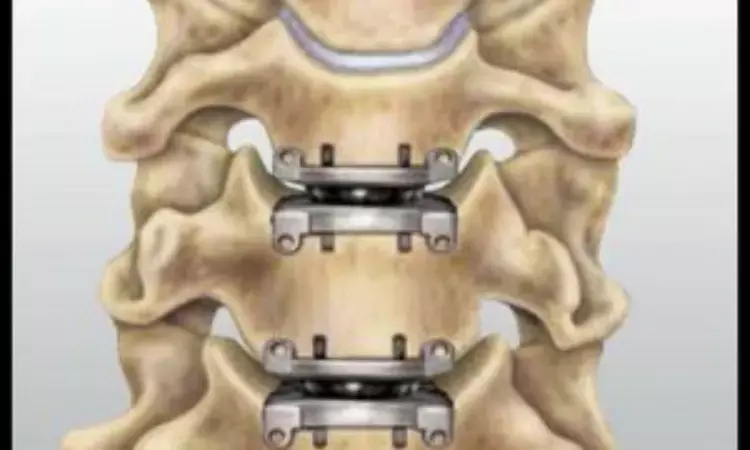- Home
- Medical news & Guidelines
- Anesthesiology
- Cardiology and CTVS
- Critical Care
- Dentistry
- Dermatology
- Diabetes and Endocrinology
- ENT
- Gastroenterology
- Medicine
- Nephrology
- Neurology
- Obstretics-Gynaecology
- Oncology
- Ophthalmology
- Orthopaedics
- Pediatrics-Neonatology
- Psychiatry
- Pulmonology
- Radiology
- Surgery
- Urology
- Laboratory Medicine
- Diet
- Nursing
- Paramedical
- Physiotherapy
- Health news
- Fact Check
- Bone Health Fact Check
- Brain Health Fact Check
- Cancer Related Fact Check
- Child Care Fact Check
- Dental and oral health fact check
- Diabetes and metabolic health fact check
- Diet and Nutrition Fact Check
- Eye and ENT Care Fact Check
- Fitness fact check
- Gut health fact check
- Heart health fact check
- Kidney health fact check
- Medical education fact check
- Men's health fact check
- Respiratory fact check
- Skin and hair care fact check
- Vaccine and Immunization fact check
- Women's health fact check
- AYUSH
- State News
- Andaman and Nicobar Islands
- Andhra Pradesh
- Arunachal Pradesh
- Assam
- Bihar
- Chandigarh
- Chattisgarh
- Dadra and Nagar Haveli
- Daman and Diu
- Delhi
- Goa
- Gujarat
- Haryana
- Himachal Pradesh
- Jammu & Kashmir
- Jharkhand
- Karnataka
- Kerala
- Ladakh
- Lakshadweep
- Madhya Pradesh
- Maharashtra
- Manipur
- Meghalaya
- Mizoram
- Nagaland
- Odisha
- Puducherry
- Punjab
- Rajasthan
- Sikkim
- Tamil Nadu
- Telangana
- Tripura
- Uttar Pradesh
- Uttrakhand
- West Bengal
- Medical Education
- Industry
3D printing may ease planning for cervical disk implants in degenerative disk disease patients: Study

USA: A 3D-printed spine replica created using a CT scan of a spine could help in improved surgeries for cervical disk implants in patients with degenerative disk disease, reveals a recent study in the journal Sensors. This could enable surgeons to preview the effects of surgical interventions prior to the operation.
For patients with degenerative disc disease, such as cervical myelopathy and radiculopathy, cervical disc implants are conventional surgical treatments. However, there is a need for determining the candidacy of cervical disc implants mainly from the findings of diagnostic imaging studies that can sometimes result in complications and implant failure. For addressing these problems, Maohua Lin, Florida Atlantic University, Boca Raton, USA, and colleagues developed a new approach to enable surgeons to preview the post-operative effects of an artificial disc implant in a patient-specific fashion prior to surgery. For that, they printed, modified a robotic replica of a person's spine to include an artificial disc implant, and outfitted with a soft magnetic sensor array.
The study was conducted to achieve three objectives: 1) to evaluate the potential of a soft magnetic sensor array to detect the location and amplitude of applied loads; 2) to use the soft magnetic sensor array in a 3D printed human spine replica to distinguish between five different robotically actuated postures; and to compare the efficacy of four different machine learning algorithms to classify the loads, amplitudes, and postures obtained from the first and second aims.
Benchtop experiments demonstrated that the soft magnetic sensor array has the capability for precise detection of the location and amplitude of forces, which were successfully classified by four different machine learning algorithms that were compared for their capabilities: Support Vector Machine (SVM), Random Forest (RF), K-Nearest Neighbor (KNN), and Artificial Neural Network (ANN).
RF and ANN algorithms classified locations of loads applied 3.25 mm apart with 98.39% ± 1.50% and 98.05% ± 1.56% accuracies, respectively. NN had an accuracy of 94.46% ± 2.84% for classifying the location that a 10 g load was applied. The artificial disc-implanted spine replica was subjected to flexion and extension by a robotic arm.
The researchers successfully classified five different postures of the spine with 100% ± 0.0% accuracy with the ANN using the soft magnetic sensor array.
"All the findings suggested that the magnetic sensor array has promising potential for generating data before invasive surgeries that could be used to preoperatively assess the suitability of a particular intervention for specific patients and to potentially assist the postoperative care of people with cervical disc implants," wrote the authors.
Reference:
The study titled, "Robotic Replica of a Human Spine Uses Soft Magnetic Sensor Array to Forecast Intervertebral Loads and Posture after Surgery," was published in the journal Sensors.
Dr Kamal Kant Kohli-MBBS, DTCD- a chest specialist with more than 30 years of practice and a flair for writing clinical articles, Dr Kamal Kant Kohli joined Medical Dialogues as a Chief Editor of Medical News. Besides writing articles, as an editor, he proofreads and verifies all the medical content published on Medical Dialogues including those coming from journals, studies,medical conferences,guidelines etc. Email: drkohli@medicaldialogues.in. Contact no. 011-43720751


